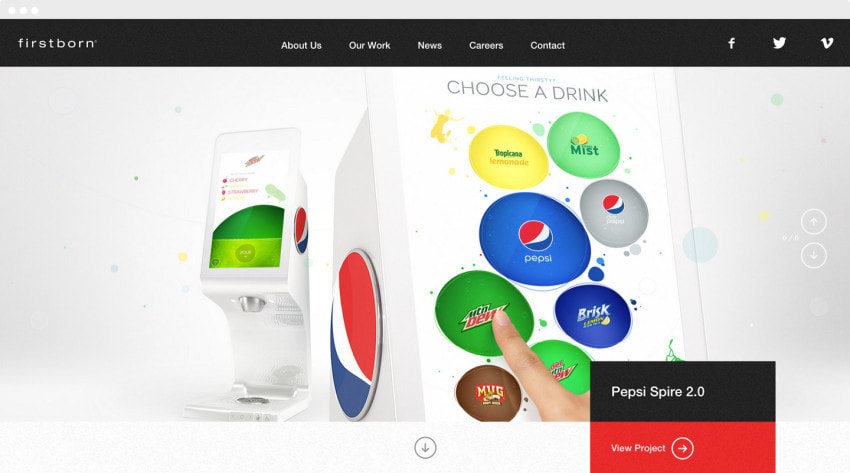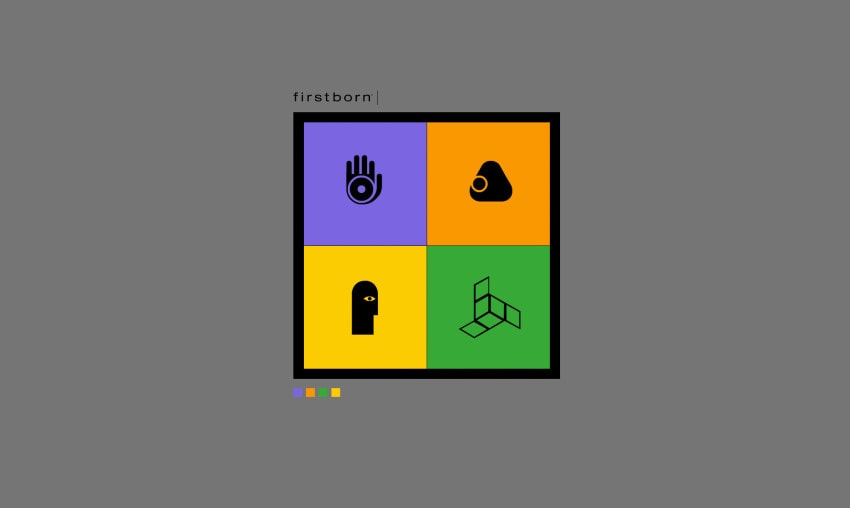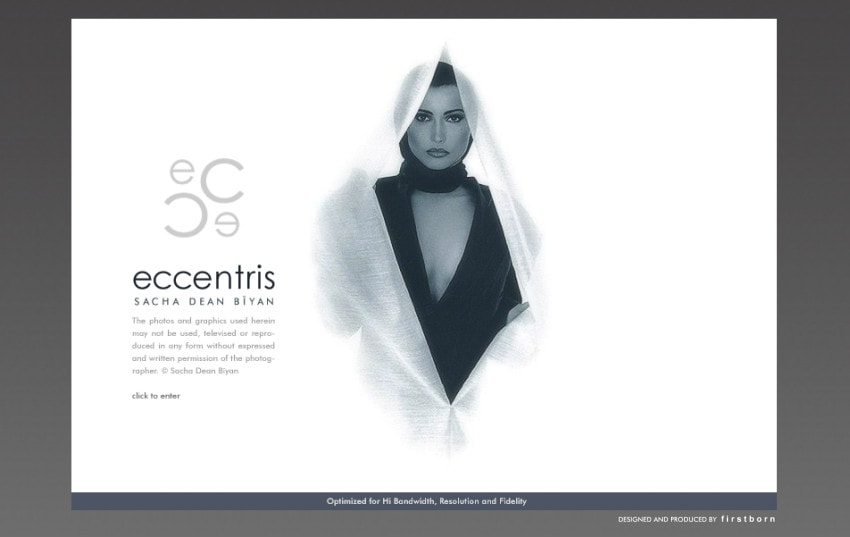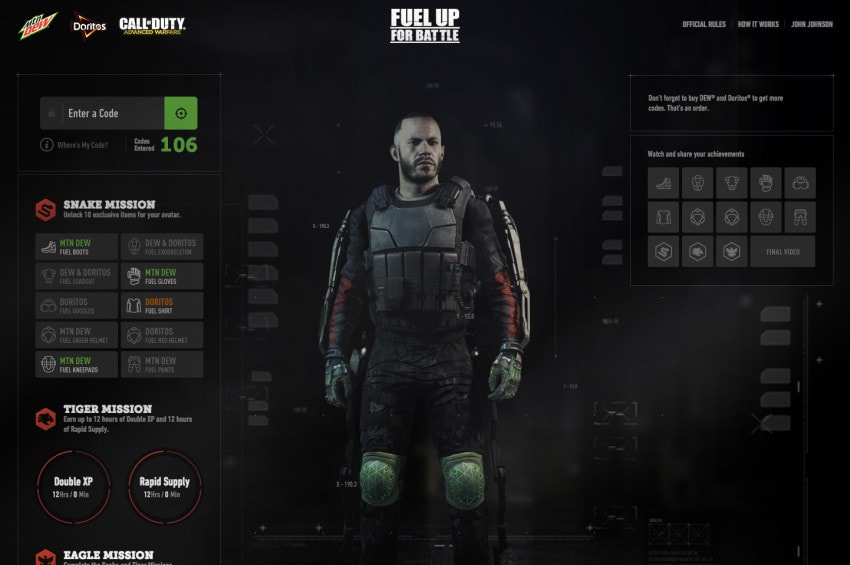When I stepped off the elevators and into Firstborn’s headquarters, I thought maybe I’d made a mistake.
I’ve been to quite a few agencies. No matter where they are — New York, LA, even Austin — they all try to impress you when you walk through the door with 30-foot high, sunlit foyers; impressive sculptures flanking a palatial reception desk; and quotes of founders etched into reclaimed barn wood hanging from industrial cabling.
But at Firstborn, things were different. I encountered a couple nice receptionists working behind a handsome but humble desk in a decidedly lackluster entryway. I was offered some water and ushered past clusters of workstations, catching glimpses of Maya and After Effects on screens as I noticed the window shades drawn against the glaring afternoon sun.
A few minutes later, I was shaking the hand of a person I can only describe as a regular guy: jeans, t-shirt, genuine smile and a handshake that wasn’t trying to prove anything. That “regular guy” turned out to be Dan LaCivita, president of Firstborn, who started at the company 11 years ago as a Flash developer.
Despite snagging a spot on Ad Age’s A-List and the #2 place under Fast Company’s Top 10 by Industry for Advertising and Marketing, Firstborn does not feel like an agency. It feels like a studio, like a place where the primary concern is making stuff, and the people making it are gleefully geeky about it.
Fundamentally, that is what brought me to Firstborn, shaking the hand of their president. I wanted to know how they went from a small digital shop making CD-ROMs in the late 90s to a full-service, 100-person agency hiring the same freelance CG and design talent as Psyop and The Mill.
While many motion shops are hacking their way through mazes of interactive work in search of new horizons, what does a place like Firstborn think about the role of motion design in its future?
Born digital before “digital” was born
In 2010, the same year that Firstborn landed on Ad Age’s A-list, they signed as digital agency of record for Sobe, Aflac and Wrigley. Such a feat brings to mind hordes of account executives high fiving each other, imagining all the golf they’ll be playing and scotches they’ll be drinking with their new clients.
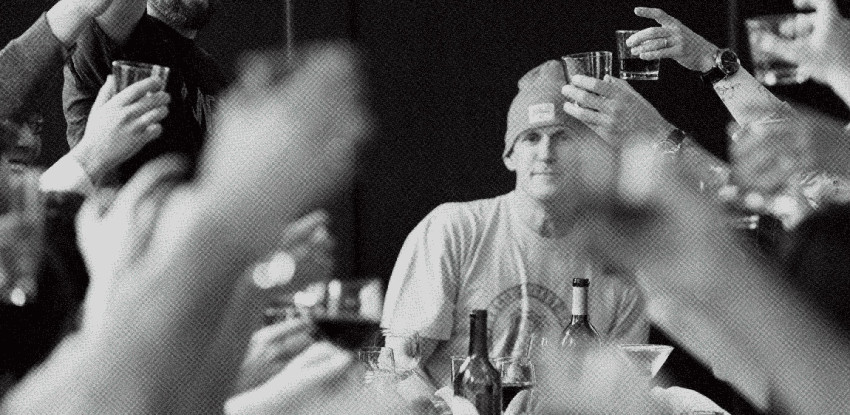
Firstborn founder Michael Ferdman surrounded by scotch (and people) at the annual Peter Luger dinner party
While the scotch part of that image might hold true, the rest didn’t apply.
“No one has ‘Account Manager’ on their business card,” says LaCivita, a tinge of pride in his voice. “Probably never will here.”
Account managers are the hallmarks of traditional agencies. Their absence at Firstborn is symbolic of their long fight to defend what LaCivita calls its “culture of makers.”
How to be an agency without being an agency
“Culture of makers” is precisely the kind of bullshit term I’ve come to expect from agencies as they struggle to attract and retain top digital talent. But when LaCivita says it, my bullshit meter doesn’t go off. Not even a peep.
That’s because I remember Firstborn from my own personal experience. Back in 2000, when I opened a pirated copy of Flash and encountered my first timeline, Firstborn was already making a name for itself as a leader in the brave new world of digital craftsmanship.
They started racking up coveted FWA awards in 2002 and never stopped. Their current count of 72 FWAs makes them the #6 all-time awarded agency. Their designers and developers have been celebrated as often (if not more) than their CEOs.
So yeah, “culture of makers.” I buy it.
Protecting the culture of makers
Firstborn was engaging in digital marketing and advertising long before “digital” was a buzzword, and their earliest years were driven entirely by direct-to-client work. It wasn’t until the early 2000s when large agencies like Crispin, Porter + Bogusky, Goodby Silverstein & Partners and JWT started reaching out to Firstborn for help.
“We got to learn how larger agencies and larger clients worked” says LaCivita of the 5 to 6 years they mixed agency work with direct-to-client work. When agencies started building their own in-house digital capabilities, Firstborn decided to double down and return to their direct-to-client roots. Firstborn was reborn as an unabashed digital agency.
“The most critical thing during that time was to change the way we represented ourselves as a company,” explains LaCivita. “For a long time, creative directors and production artists at agencies were our clients. Now our clients were CMOs and brand managers. So we had to talk to those people, but we didn’t want to lose the level of craft. And that was a balance.”
The road to motion design
Like many shops with roots in Flash, Firstborn has always embraced motion design, and they’ve steadily built their chops over the years.
But over the last couple years, a perfect storm of technology, talent and patience has unlocked a new level of production value — and begun attracting the talent that comes with it.
As a studio that was born interactive, Firstborn has an advantage over “traditional” motion shops trying to get into the interactive space. (And there are plenty of them.) It’s arguably a longer, more difficult journey to start as a pure motion design shop and then incorporate sustainable interactive offerings over time. The tendency is to treat interactivity like an added ingredient to linear storytelling. That’s problematic.
“For us, adding motion design and live action was more of a natural evolution, as opposed to someone steeped in tradition and trying to add some new interactive thing on top of it,” says LaCivita.
Attracting (and keeping) the right talent
Alex Krawitz left Bigstar, the production company and design shop he co-founded in 2004, to join Firstborn in 2011. He’s now the Senior Vice President of Content Development, overseeing live action for interactive projects, broadcast production, post-production, 3D and motion graphics.
Krawitz works closely with another key hire, Associate Creative Director Jonathan Kim, who parted ways with LA-based Royale after almost four years as an art director there.

Left to right: Jonathan Kim, Alex Krawitz and Dan LaCivita
When the content department was created by Firstborn CCO JoonYong Park, the goal wasn’t to create an in-house production facility that would be good for a digital agency.
“Our goal was to be good, period,” says Krawitz. Firstborn wanted to compete with the production companies and vendors traditionally relied upon by old guard agencies.
That meant attracting the best design, animation and visual effects talent. But Firstborn wasn’t known for that kind of work, and progress was slow. There were a few pioneering souls (like Kim) who were peeking over the fence, curious about the convergence of interaction and motion design, though.
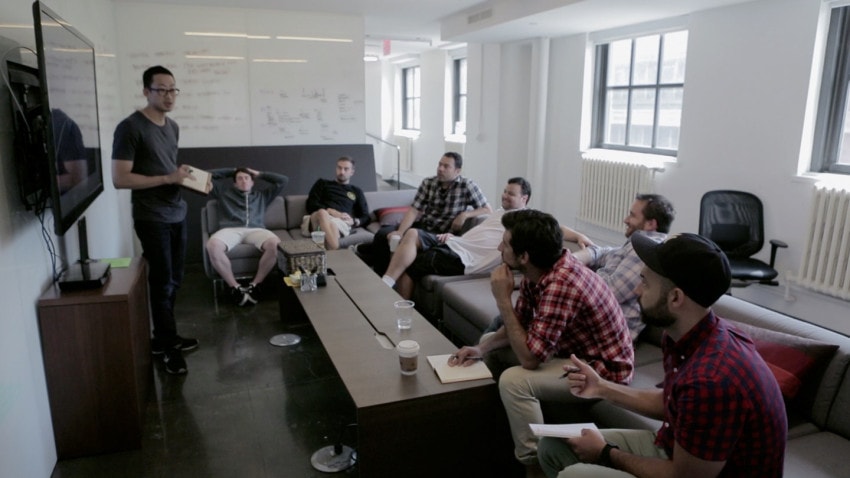
Jonathan Kim (left) in a production meeting for Call of Duty “Fuel Up for Battle”
“I remember in the early and mid 2000s, a lot of motion designers would look at Flash and interactive work, and think, ‘Meh, it’s not really there yet,’” says Kim of the days when the technological constraints of the web implicitly kept it from competing with the level of polish possible in broadcast work.
Around 2009, as the underlying technology of the web was maturing, interactive marketing and advertising were also maturing, reaching a tipping point for motion designers to get involved. “The clients were there. The jobs were there. The tech was there. But there was this hole when it came to motion design,” explains Kim.
So Kim took the leap. He was surprised by the warm reception he got, especially from the developers. They were hungry for motion design. They wanted more.
Answering the Call of Duty
Perhaps the clearest example of how Kim’s pedigree blended with Firstborn’s coding chops is in “Fuel Up For Battle,” a code redemption site for Mountain Dew and Call of Duty: Advanced Warfare.
The concept is simple: Users enter codes from qualifying products to unlock in-game rewards, things like custom armor or weaponry. It’s something Firstborn had done before for Xbox, and it was a big hit.
Which was exactly the problem. They’d set their own internal bar of success very high. Rather than a simple, one-page redemption site, Firstborn pitched something much more ambitious.
“I don’t think they were expecting it to be at the quality we pitched,” says Kim. Firstborn envisioned a cinematic, gamified experience that felt like an extension of the Call of Duty world. “We pitched a custom CG soldier and the ability to add loot — and when you unlock something, it unlocks a crazy animation that looks like it’s part of the UI.”
The client loved it, but they had to ask: How the hell are you going to actually make it?
The answer, as is often the case with web work, was sleight of hand. Highly skilled sleight of hand, but still sleight of hand.
“When you see the UI,” says Kim, “and you see the soldier. There’s a bunch of really cool motion graphics, but only about 15% of it is really interactive, which was all built in WebGL.”
Kim sat with the developers to figure out how to treat the real-time elements in a way that both mimicked a fantasy HUD system and integrated seamlessly with the rest of the graphics. Dimming the opacity of certain UI panels, for example, turned out to be a simple, performant solution that was easily executable within the constraints of WebGL.
The rest of the experience was largely pre-rendered animation that complemented the UI. For the unlock animations, Kim and the team avoided a pop-up video player and instead created fullscreen takeovers in keeping with the cinematic nature of the Call of Duty franchise.
VR meets VFX: The Art of Patrón
It seems everyone has jumped on the virtual reality bandwagon, thanks largely to the excitement around the Oculus Rift and the promise that science fiction-level immersion in other worlds will soon be possible.
Dedicated production companies like VRSE.works and specialized teams like Framestore’s VR Studio are hoping to cash in on the expected gold rush fueled by consumers strapping bulky headsets to their faces, jaws agape.
Firstborn’s VR projects for Mountain Dew (“Dew VR Skate” and “Dew VR Snow”) helped them build confidence in the highly specialized field of stereoscopic 360 video production. So when premium tequila brand Patrón asked if Firstborn could create a VR experience that captured the complex process of making tequila, Firstborn felt pretty confident telling them yes.
That’s not to say it was easy, though.
The goal of The Art of Patrón was to allow viewers to fly through a Mexican hacienda, experiencing the tequila making process from the point of view of a bee liberated from the Patrón logo. Actually pulling this off meant dealing with a number of non-trivial technical challenges.
No faking allowed
“With VR, you can’t fake anything,” explains Bruno Ferrari, Senior Motion Designer and Nuke Compositor. “With a regular 16:9 frame, you can make a mask here and make a mask there. You can compensate. With 360, you can’t. If you make a mask, it has to keep going and going. There’s nowhere to hide.”
Under the direction of Mark Kudsi (formerly of Motion Theory), the live action footage Firstborn captured with a 3D-printed GoPro rig mounted on a custom drone created by Aerial MOB told the story of the Patrón process. But to really sell the bee’s-eye-view idea, Firstborn needed to add photoreal CG elements throughout the sequence.
Firstborn partnered with Legend 3D, experts in stereoscopic visual effects, to create a system that allowed Firstborn to track CG elements within the 360 footage.
With the ability for viewers to look any direction they please, extra steps had to be taken to keep viewers immersed in the experience. And nothing spoils immersion like spotting a drone hovering above you.
Soda Fountain 2.0: Pepsi Spire
Nestled in the core of Firstborn HQ, a narrow, nondescript room houses several Frankensteinian machines. Ethernet cables snake from metal boxes to touchscreens mounted on large, refrigerator-like appliances. Hidden CPU fans whirr endlessly, filling the room with a soft hum and hinting at secret powers.
This is the prototype room for a number of projects Firstborn has undertaken with PepsiCo Foodservice, including Pepsi Spire, a challenge to rethink the soda fountain experience for the digital age. Firstborn has worked on Pepsi Spire for over 3 years, shepherding the UX and UI through different hardware configurations and form factors.
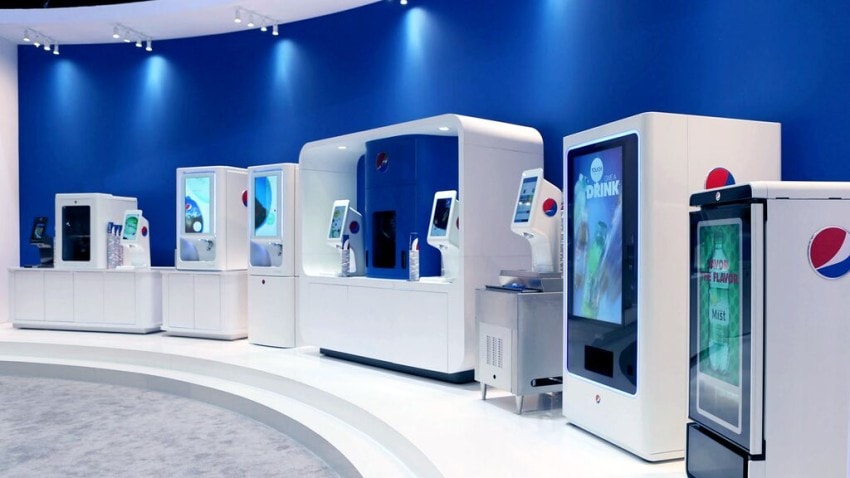
A showroom including some of the prototypes Firstborn has worked on for Pepsi
Just the right size
In many ways, Pepsi Spire represents a project that only Firstborn could undertake. The opportunity evolved through long-standing relationships with Pepsi through Mountain Dew and other brands. It leverages the full strength of Firstborn’s in-house developers and designers. And the latest iteration of the experience tapped both the live action and motion design capabilities of Firstborn’s studio team.
The project’s extended timeline and R&D-heavy approach is also something that many smaller shops couldn’t financially (or creatively) tolerate, regardless of how attractive it is to work on. You need a team large enough to cycle fresh talent through the project without undermining institutional knowledge, and you need a financial foundation healthy enough to weather the sporadic delivery timeline.
Translation: You need to be big, but not too big.
Pitfalls of the piecemeal approach
Of course, Pepsi could have cobbled together several separate vendors to pull of the project. That approach is actually more common — but it’s not without problems.
“If you took that project and you had a great UI company design the interface, someone else program it, a motion shop do the video piece and some of the UI stuff, it’s going to look like 3 or 4 different shops made it,” says LaCivita.
The piecemeal approach also threatens the very survival of the project. More vendors means more protracted approval processes, more management time and slower iterations in general. Sometimes, that’s enough to derail a project completely.
Blurring the lines
Pepsi Spire’s giant touchscreen interface is both a slick piece of marketing and a genuinely fun way to create a custom beverage.
“People don’t know when the interaction starts and when the motion ends — in a good way. The lines are blurred,” says Kim. “Now that we’re in the trenches with the developers, it’s more about figuring out what WebGL, for instance, can bring to the table that After Effects can’t. It’s all about smart decision making and dividing the tasks between the technologies that make the most sense.”
As I chatted with other people around Firstborn, I started to see the company’s mission as one giant effort to blur the lines across all the traditional boundaries that have siloed agencies and studios in the past. The conventional pitch around creating a full-service agency is the convenience and efficiency clients enjoy from a one-stop shop.
But that misses the real value. The real value is in true, low-level integration — designers and coders seamlessly joining minds — without anyone caring about titles or fiefdoms. That level of cross-pollination is incredibly difficult to pull off. It takes slow, organic growth around a core competency of actually making stuff, not just talking about it.
“The relationships we have with our development and web designers is pretty rare. I don’t think you’ll find that anywhere else,” says Michael “Kuz” Kuzmich, Associate Director of Motion Graphics. “Slow and steady is the way go.”





